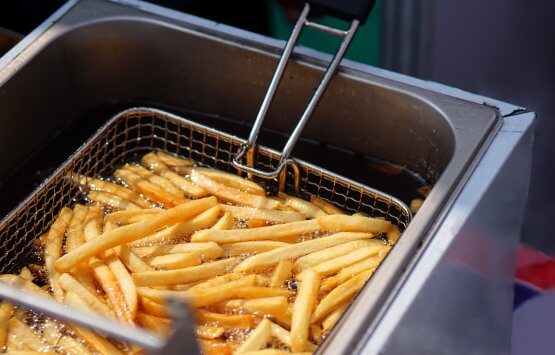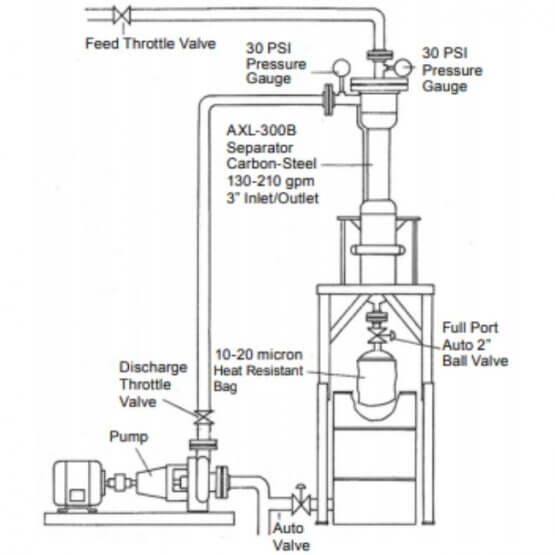French Fry Plant Removes Carbon from Fry Oil

Separator Removes Carbon from Fry Oil, Saving Money, Oil & Energy in French Fry Plants
SYSTEM IDENTIFICATION: Eleven frying machines (with capacities of 700-1000 gallons each and average liquid flow rates of 200 U.S. GPM) used in six food processing plants to fry French fried potatoes
SOLIDS/LIQUID: Carbon particles in hot fry oil
PROBLEM: French frying potatoes in oil, ranging in temperature from 360°F to 380°F, leads to carbon residue, which can build up in circulators, heat exchangers and fryers, reducing their efficiency and causing actual damage to the machinery. Also, the dark carbon particles discolor the frying oil and adversely affect FFA readings.
To solve the carbon problem, six Western states food processing plants opted to try single indexing paper filters, at an annual cost of $5,000 to $8,000 per fryer. Plant executives, however, soon became dissatisfied with these filters as a solution. Not only were paper filters costly, but they also created waste disposal problems, were messy, posed potential fire hazards, and exposed employees to the possibility of being burned while handling the hot, used paper.
SOLUTION: Hansen Filtration Specialists, a Utah based LAKOS dealer in the food industry, was asked to lend assistance in finding a more effective and cost-efficient solution to the problem of carbon residue. They responded by installing eleven Lakos AXL Series Separators (one per fryer) with full port automatic ball valve purging systems in the six plants. Fry oil is now circulated through the separators and then returned, free of carbon particles, to the front of the fryer. The separated carbon is automatically purged from the collection chamber into a bag filter, and the excess oil that seeps through the bag is returned to the fryer, eliminating waste.
With these Lakos installations, the need for paper filters was eliminated, and this savings alone paid for the separators in less than a year. But, the savings did not stop there. Since paper filters become soaked with oil during the filtration process, their elimination has also led to a dramatic decrease in the amounts of oil lost through saturation. Also, as used oil circulates through the separators en route to the heat exchangers, oil temperatures drop by no more than 5°, thereby substantially reducing utility costs. And, because separators emit no fumes during operation, the need for exhaust systems has been eliminated. Finally, since Lakos Separators have no moving parts to wear out or screens to replace, maintenance is now minimal, cutting labor costs. Along with the monetary savings, the use of separators to remove carbon particles has also enhanced the color of the oil, improving FFA readings, and more than doubled the gallon-per-minute processing rate, reducing the chances of carbon build-up in heat exchangers and fryers.
